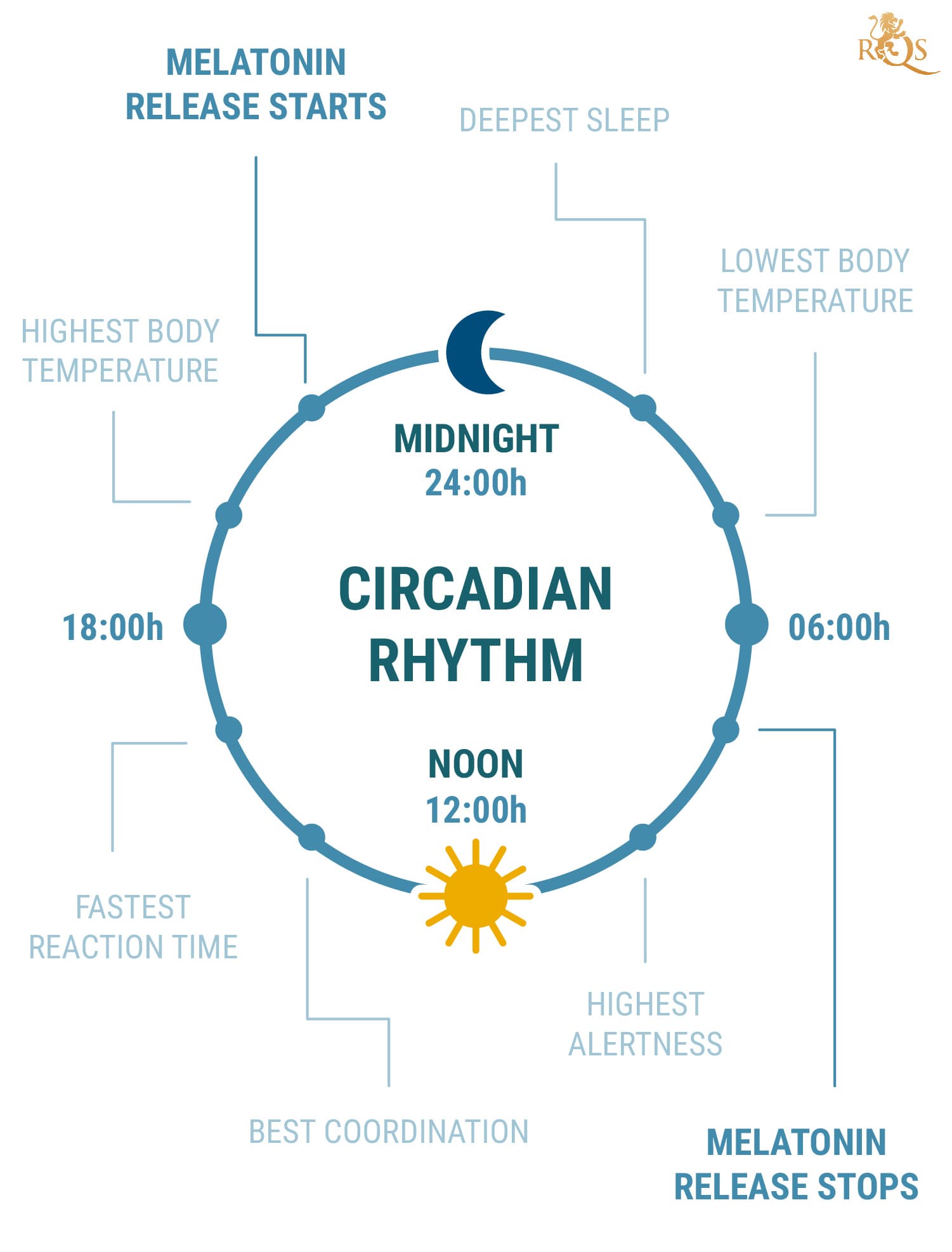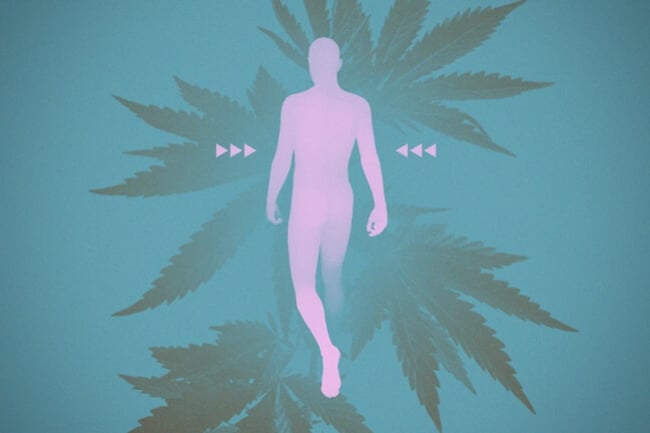.

How Cannabis Affects The Pineal Gland
The pineal gland has a profound impact on the brain. Its sensitivity has led to speculation that it is the "third eye" referred to in mythology. It is worth investigating what sort of impact cannabis has on this part of the brain.
Contents:
"The third eye" appears as an iconic symbol in Ancient Egyptian art. The Hindus also symbolised a third human eye with a ceremonial red dot or “bindi” on the forehead. This is said to mark the location of the Ajna chakra, a centre of energy for the subconscious mind. It is said to be humanity's link to the spiritual realm, with philosopher René Descartes calling it "the seat of the soul". Wasn't much of Descartes' medical research roundly discredited even during his lifetime? In short, yes. However, the long answer allows for the nuance that chakras do appear to correspond to important physiological locations throughout the body.
In the case of the third eye, the pineal gland not only appears there as an important neurological organ; it is in fact a light-sensing organ structurally similar to the eye. Okay, maybe there is something going on here. The pineal gland is important to many disparate cultures for its spiritual significance. It is named for its pinecone shape, a symbol that appears throughout the art of Assyrian, Greek, and other cultures. Claims about its powers range from attuning one's mind with God or even telepathic communication. Let's look at what the science has to say about the powers of the pineal gland. If it does serve some important function, then it is also worth exploring how cannabis can impact this part of the brain.
What Is Circadian Rhythm?
The tide goes in and out. Day turns to night. Seasons change. Nature is full of rhythms, and the human body is no exception. Alongside our breath and heartbeat, our sleep–wake cycle also has a rhythm of its own. We don’t just doze off and wake up by chance. Parts of our brain and endocrine system respond to environmental cues. The resulting cascades make us feel energised and ready to tackle the day, or sleepy and ready for slumber.
Our body's circadian rhythm controls the physiological processes that manage the sleep–wake cycle. The light and dark cycles of nature dictate our circadian rhythm, which is not coincidentally in synchrony with a 24-hour internal master clock. The very term circadian stems from the Latin “circa diem”, or “around a day”. The cycle is most responsible for the regulation of processes like sleeping and waking.
During the day, sunlight hits the human retina, which then sends a signal to the suprachiasmatic nucleus (SCN)—a bundle of around 20,000 neurons located in the hypothalamus.[1] This light cue causes the release of the stress hormone cortisol, as well as a rise in body temperature; two factors that increase alertness.
When nighttime swings around, the retina and SCN also pick up on the gradual onset of darkness. This results in a cascade that causes the pineal gland, a small endocrine organ located in the midline of the brain, to release melatonin.[2] Also known as the “sleep hormone”, this chemical acts on receptors that make us feel tired and ready for bed.


The Pineal Gland
The pineal gland plays a critical role in our circadian rhythm. At less than 1cm in diameter, this neuroendocrine organ sits just outside of the blood–brain barrier, where it synthesises key neurotransmitters and hormones involved in sleep and mood. Modern scientists have recently advanced in determining its key functions, but this special gland remains steeped in esotericism.
The philosopher Rene Descartes referred to the pineal gland as “the principal seat of the soul”.[3] Certain religious sects and adherents to new-age beliefs refer to the gland as the “third eye”, while researchers are still exploring how and why the organ secretes DMT, a powerful entheogen.
Interestingly, in lower vertebrates, the pineal gland is directly sensitive to light—much like an eye. The pineal of mammals lost this trait over the course of evolution, and instead receives light signals from the eyes.[4]
Before we explore how cannabis affects this important and mystical gland, find out more about the crucial hormones it produces, and what happens when the pineal becomes calcified.
-
Melatonin Production
The pineal’s primary function is to regulate circadian physiological processes through the translation of light and dark signals into the release or withholding of melatonin.
As darkness sets in, cells in the pineal called pinealocytes get to work producing this sleep hormone. The gland releases melatonin into systemic circulation, which carries it off to distant organs. During the night, melatonin levels are elevated to around 10 times what they are in the day. Quantities of the chemical peak at around 2–4 am, and then slowly start to decrease as signals from the rising sun begin to inhibit its production.[5]
Melatonin exerts its effects by bindings to two key receptors; the MT1 receptor involved in rapid eye movement (REM) sleep, and the MT2 receptor implicated in non-REM (NREM) sleep.[6]
But melatonin doesn’t just come from nowhere. Pinealocytes craft this molecule from the precursor tryptophan, an essential amino acid found in common foods such as cheese, poultry, oats, and bananas. Through a series of enzymatic reactions, these cells convert tryptophan into the mood-stabilising hormone serotonin, and eventually into melatonin.


-
Serotonin Production
Serotonin-producing neurons pump out this neurotransmitter to allow brain cells to communicate with each other, and, among other important functions, to regulate mood, happiness, and anxiety. However, in the pineal gland, this “happiness hormone” serves as a molecular building block to melatonin.
-
Calcification of the Pineal Gland
Because the pineal gland fulfils such a key physiological role, things can quickly go south if it starts to malfunction. Calcification is one malady that can affect the pineal gland, as well as other parts of the body, such as the heart valves.
Factors such as ageing and increased metabolic activity of the pineal are believed to increase the likelihood of calcium deposits forming. Conditions such as Alzheimer’s disease and schizophrenia are also linked to pineal calcification. Scientists are still exploring how calcification affects the pineal gland and the body as a whole, as well as methods to potentially decalcify and rejuvenate the pineal.[7]
The Impact of Cannabis on the Pineal Gland
So, how exactly does cannabis affect the pineal gland? While the more spiritual among us believe that the herb opens the third eye and helps us perceive deeper layers of reality, researchers have made progress of their own in the domains of observational science.
Cannabinoids such as THC and CBD affect the body largely by interfacing with the endocannabinoid system (ECS). This network of receptors, enzymes, and signalling molecules (endocannabinoids) regulates many aspects of human physiology. Both THC and CBD work by binding directly to ECS receptors and other molecular targets, influencing homeostasis.
A paper published in the Journal of Pineal Research confirmed the presence of ECS components in the pineal gland of rats. Researchers detected receptors and enzymes, suggesting that the ECS helps to govern the function of the pineal.[8]
More specifically, this is how they discovered the presence of CB1 and CB2 receptors in this gland. These receptors are main components of the "classical endocannabinoid system", and together underpin myriad physiological processes. The CB1 receptor is primarily expressed throughout the central nervous system, and facilitates the cannabis high when activated by THC. The CB2 receptor appears mainly throughout the immune system, and though it isn’t involved in the euphoric effect of cannabis, it too is activated by phytocannabinoids and endocannabinoids, including THC, beta-caryophyllene, and 2-AG.
The researchers also identified the presence of fatty acid amide hydrolase (FAAH), a metabolic enzyme tasked with breaking down anandamide once it has fulfiled its physiological function at cannabinoid receptors.
Cannabis scientists are currently exploring the role of molecules that temporarily block this enzyme—FAAH inhibitors—to elevate anandamide levels in cases of low endocannabinoid tone.
This mechanism could potentially offer an avenue to target and modulate the activity of the pineal gland in a favourable manner.
The team that made these groundbreaking discoveries concluded, “..the pineal gland comprises indispensable compounds of the endocannabinoid system indicating that endocannabinoids may be involved in the control of pineal physiology”.
The ECS also serves to transmit the signals of the circadian pacemaker (remember the SCN from earlier?) to the rest of the body; endocannabinoids link the output of this command centre to processes such as appetite, nervous system firing, and body temperature. Because of this association, researchers think that targeting the ECS could help to hack parts of the circadian rhythm, including the sleep–wake cycle.[9]


-
Cannabinoids and Melatonin Production
So far, it remains unclear whether driving or dampening some ECS elements’ activity has a better outcome on melatonin production. Animal research carried out back in 2006 found that a range of cannabinoids interfered with melatonin production.[10] To get to grips with how THC, CBD, and CBN impact this sleep hormone, we need to quickly touch upon how it’s made.
As mentioned, it all starts with tryptophan. Once converted into serotonin, the neurotransmitter norepinephrine spurs the activity of an enzyme called arylalkylamine N-acetyltransferase, or AANAT for short. This critical protein transforms serotonin into N-acetylserotonin—a molecule one step away from melatonin.
The research team found that all three cannabinoids in question reduced the activity of these enzymes, which led to the decreased production of melatonin. To test whether cannabinoid receptors played a role in this process, they administered the cannabinoids alongside ECS receptor antagonists (molecules that block these sites). Despite blocking their perceived mechanism of action, the cannabinoids still lowered melatonin levels; however, they imposed their effects away from the classical ECS receptors (CB1 and CB2).
However, we need to keep in mind that mice and humans are very different organisms. Cannabinoids impact human physiology differently in many cases, and it turns out that THC appears to raise melatonin levels in people. A 1986 paper published in the journal Hormone and Metabolic Research supports this view. The study tested the effects of THC on melatonin synthesis in nine male volunteers. The researchers found the cannabinoid to significantly increase melatonin levels in all but one subject.[11]
However, the age of this study and limited sample size mean we should view it through the lens of scepticism. We need modern and strictly designed clinical trials to determine just how cannabinoids influence melatonin production in the pineal gland.
It’s also important to note that cannabis produces a wealth of phytochemicals, and cannabinoids are just one component of this arsenal.
Aromatic terpenes are potent chemicals that underpin the smell and taste of each cultivar. Some terpenes have been found to activate cannabinoid receptors too, and to interact synergistically with cannabinoids. This relationship between terpenes and cannabinoids partially dictates the final effects of each variety.
Terpenes such as myrcene are known for their stoning effects, which some users swear by when trying to achieve a good night's sleep. Future research on how cannabinoids and terpenes affect melatonin biosynthesis and circadian rhythm will paint a more detailed picture of how cannabis, on the whole, affects the pineal gland.
-
Implications for Ageing?
Early research suggests that constituents from the cannabis plant can influence the pineal gland. But why does this matter? From a pharmacological point of view, it raises important queries into whether cannabis might help to manage our circadian rhythm as we age.
From the age of 60, our circadian rhythm shifts by about half an hour each decade.[12] Older adults also experience more time in less-restful light sleep. Further research needs to explore the role of the pineal gland in these age-related changes, but the gland certainly becomes more calcified as we get older, and melatonin production also drops.
As of now, all we can do is wait for future research into THC and other cannabinoids to unveil the true potential of these molecules for the ageing pineal, and the common sleep problems we face as we become older.
Science and Spirituality
Whether or not cannabis boosts some spiritually significant function of the pineal gland is down to perspective. Some claim that an altered state of consciousness can be triggered by activity of the pineal gland during meditation. Meditative and psychedelic-resembling states are also known to arise through cannabis use.
Cannabis has been used as a sacrament in far-flung religious ceremonies from Hinduism to Rastafari. There can be profound feelings of personal insight or connectedness with the world when taking cannabis. Does this sense of contentment come from the underestimated power of opening our third eye and stimulating the pineal gland? Or is this just the way one thinks when high? Stoners have a range of beliefs from the spiritual to the sceptical. Therefore, each person's experience will vary. One thing we can all agree on is our fascination with the power of cannabis.
- Circadian Rhythms https://www.nigms.nih.gov
- Circadian Regulation of Pineal Gland Rhythmicity https://www.ncbi.nlm.nih.gov
- Descartes and the Pineal Gland (Stanford Encyclopedia of Philosophy) https://plato.stanford.edu
- Human pineal physiology and functional significance of melatonin - PubMed https://pubmed.ncbi.nlm.nih.gov
- Melatonin and Its Receptors: A New Class of Sleep-Promoting Agents https://jcsm.aasm.org
- Frontiers | Differential Function of Melatonin MT1 and MT2 Receptors in REM and NREM Sleep | Endocrinology https://www.frontiersin.org
- Molecules | Free Full-Text | Pineal Calcification, Melatonin Production, Aging, Associated Health Consequences and Rejuvenation of the Pineal Gland https://www.mdpi.com
- The rat pineal gland comprises an endocannabinoid system - PubMed https://pubmed.ncbi.nlm.nih.gov
- Changing the tone of clinical study design in the cannabis industry https://www.degruyter.com
- Cannabinoids attenuate norepinephrine-induced melatonin biosynthesis in the rat pineal gland by reducing arylalkylamine N-acetyltransferase activity without involvement of cannabinoid receptors https://onlinelibrary.wiley.com
- Thieme E-Journals - Hormone and Metabolic Research / Abstract https://www.thieme-connect.com
- How Circadian Rhythms Change as We Age | Sleep Foundation https://www.sleepfoundation.org








































